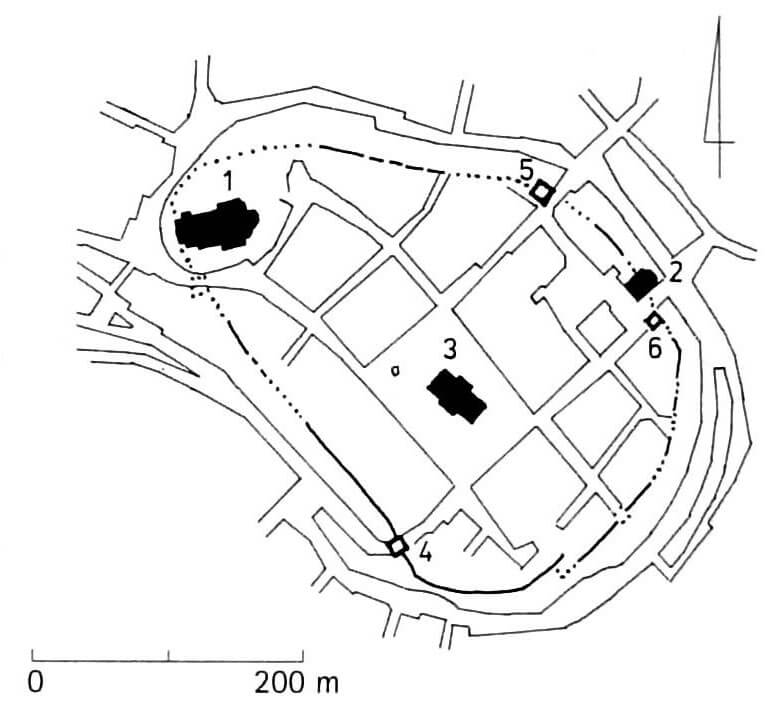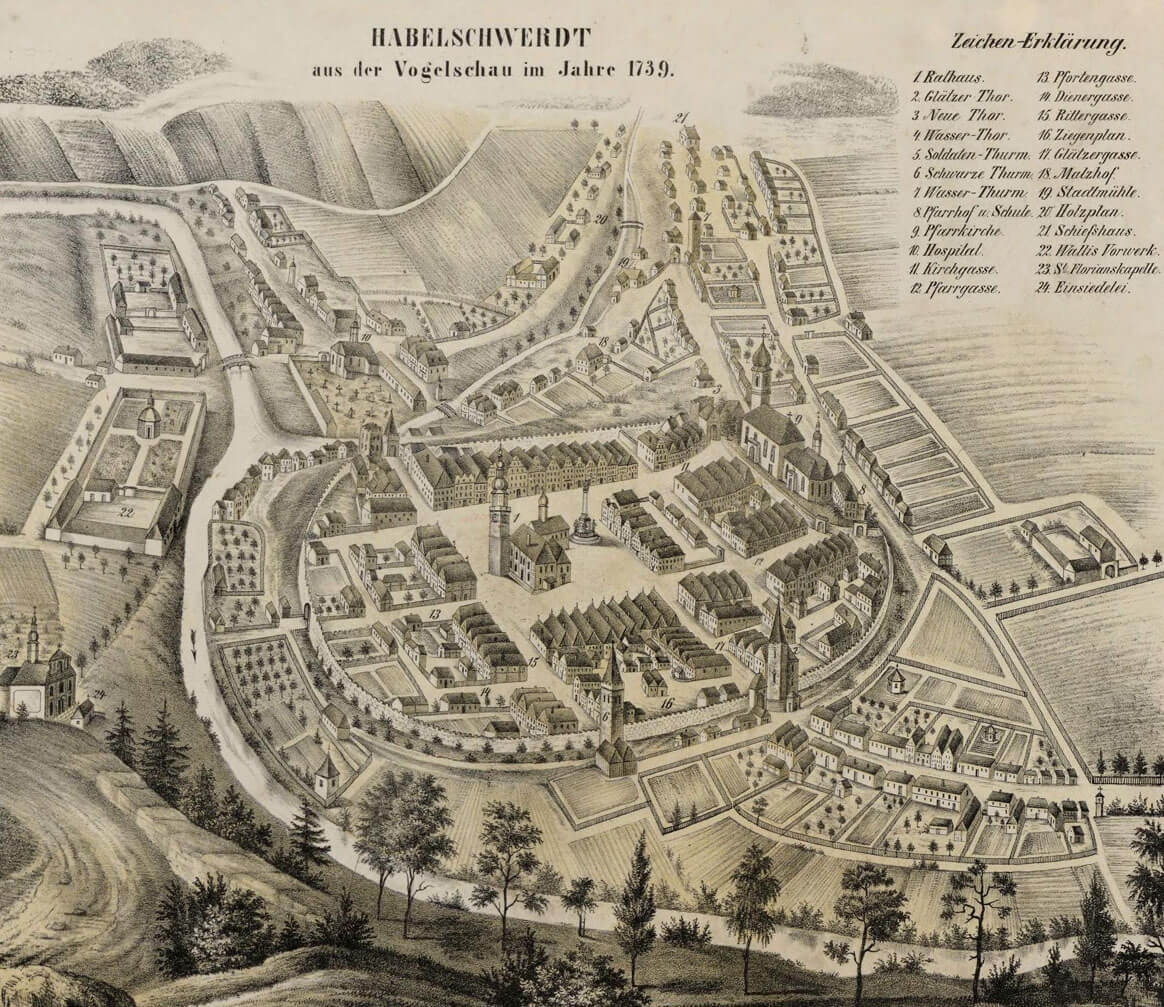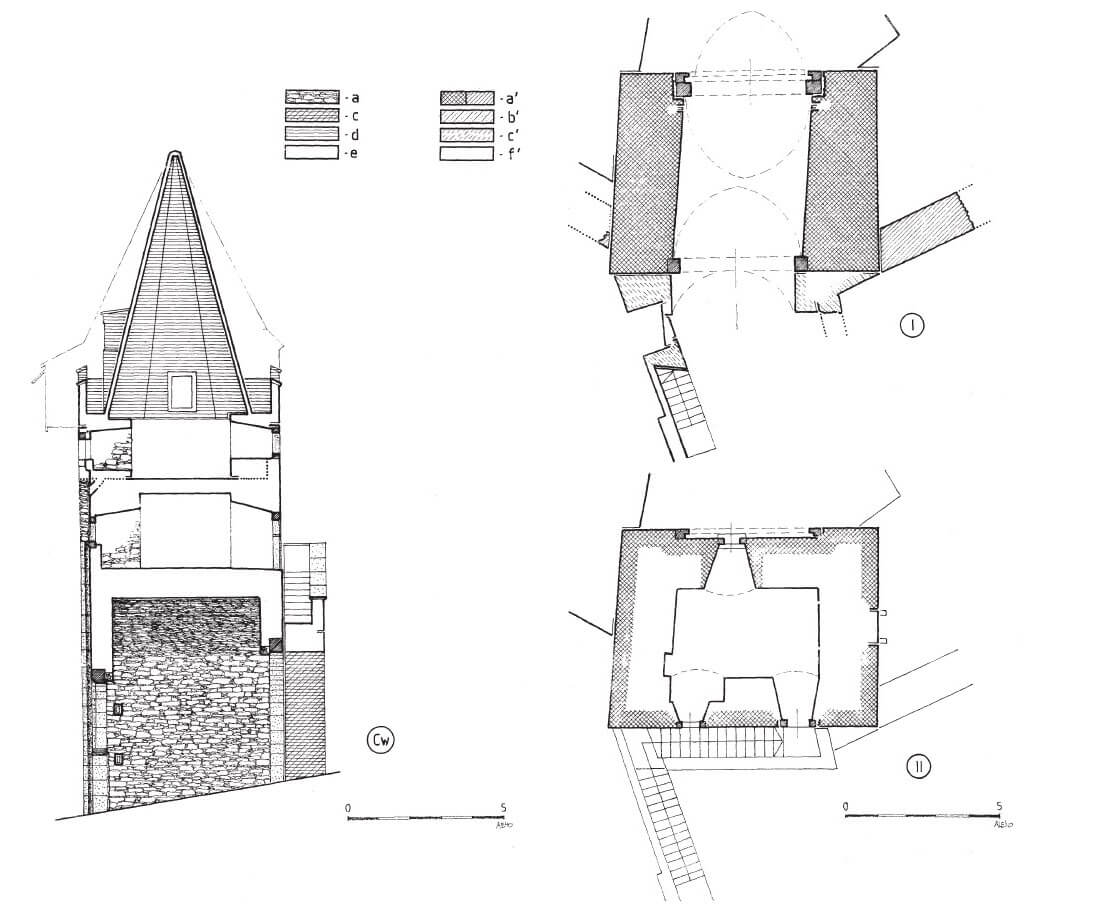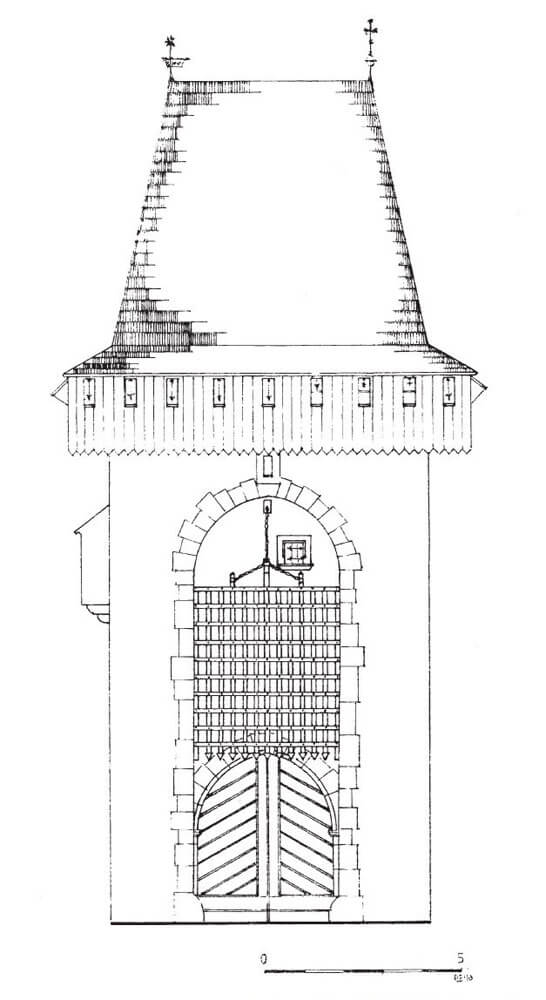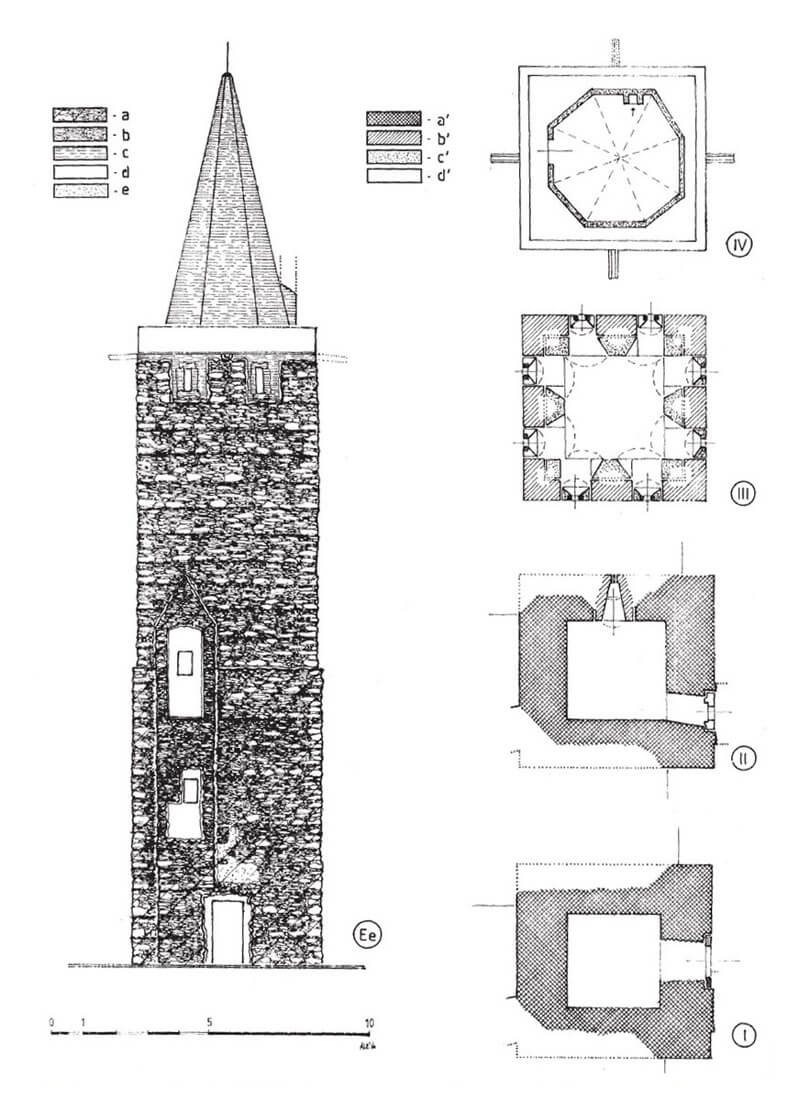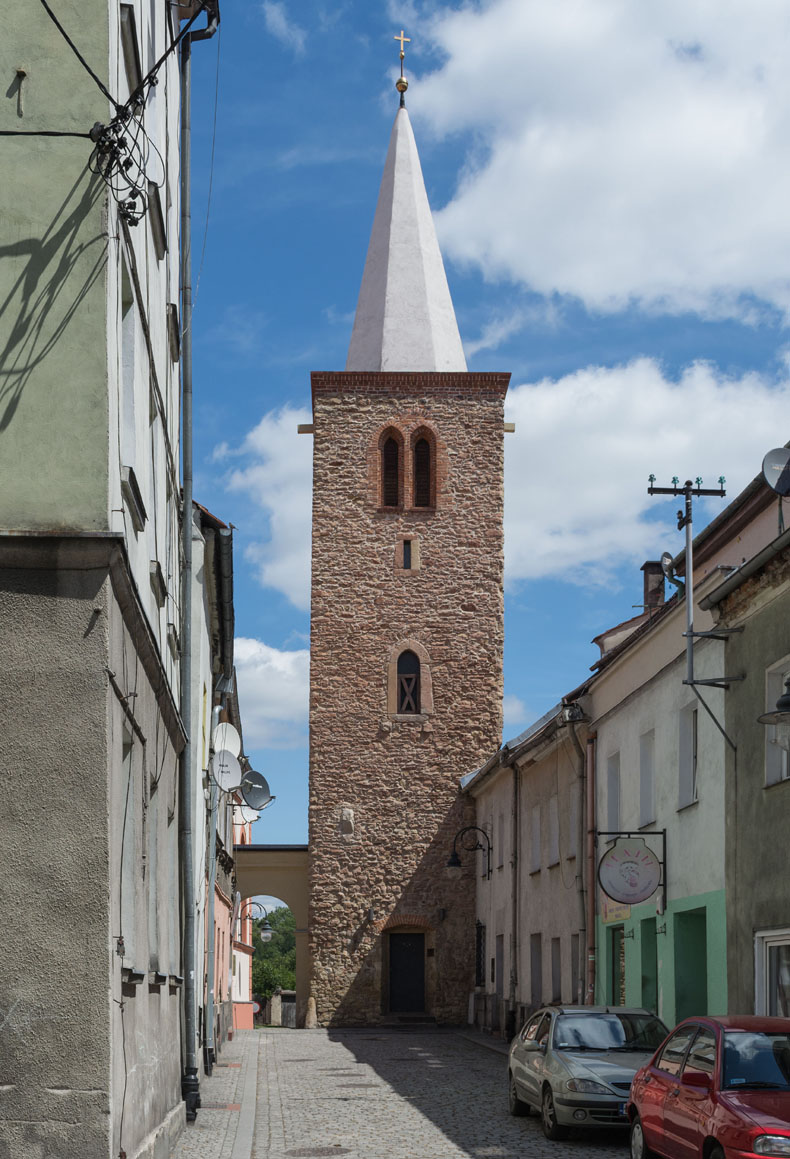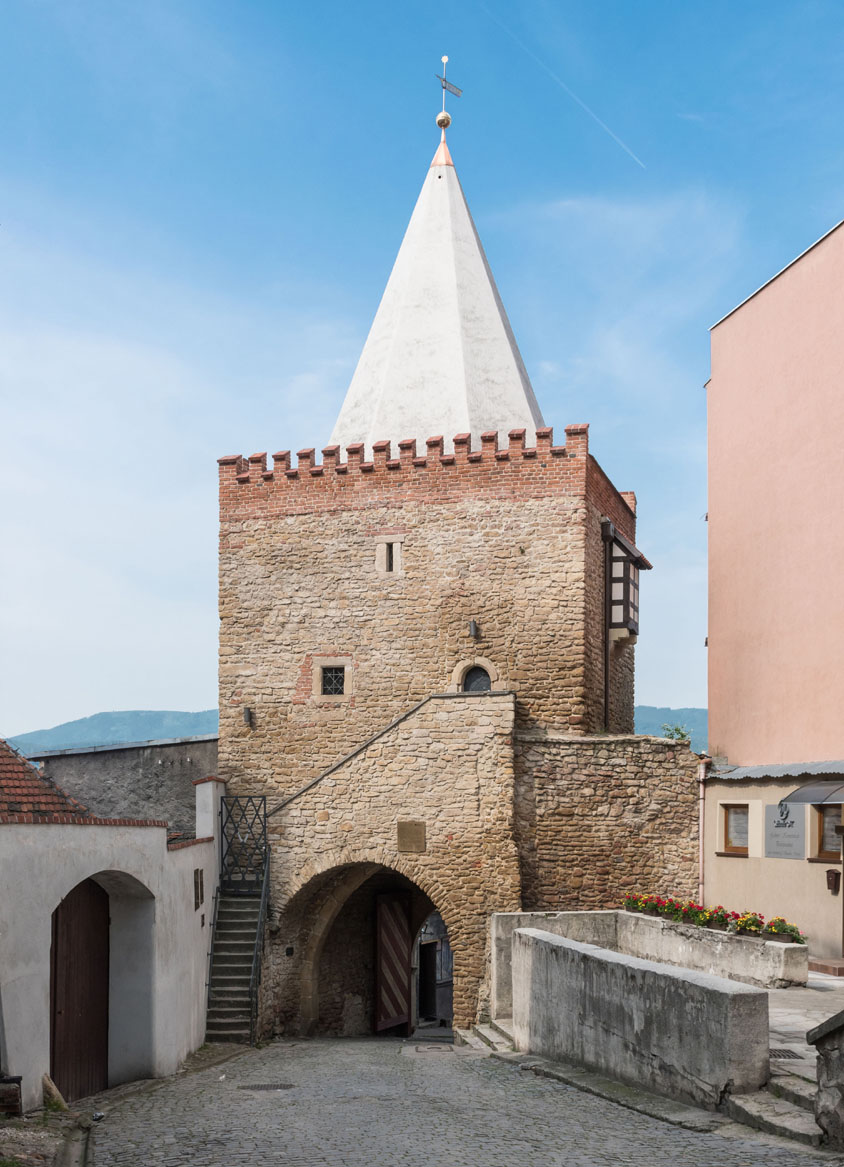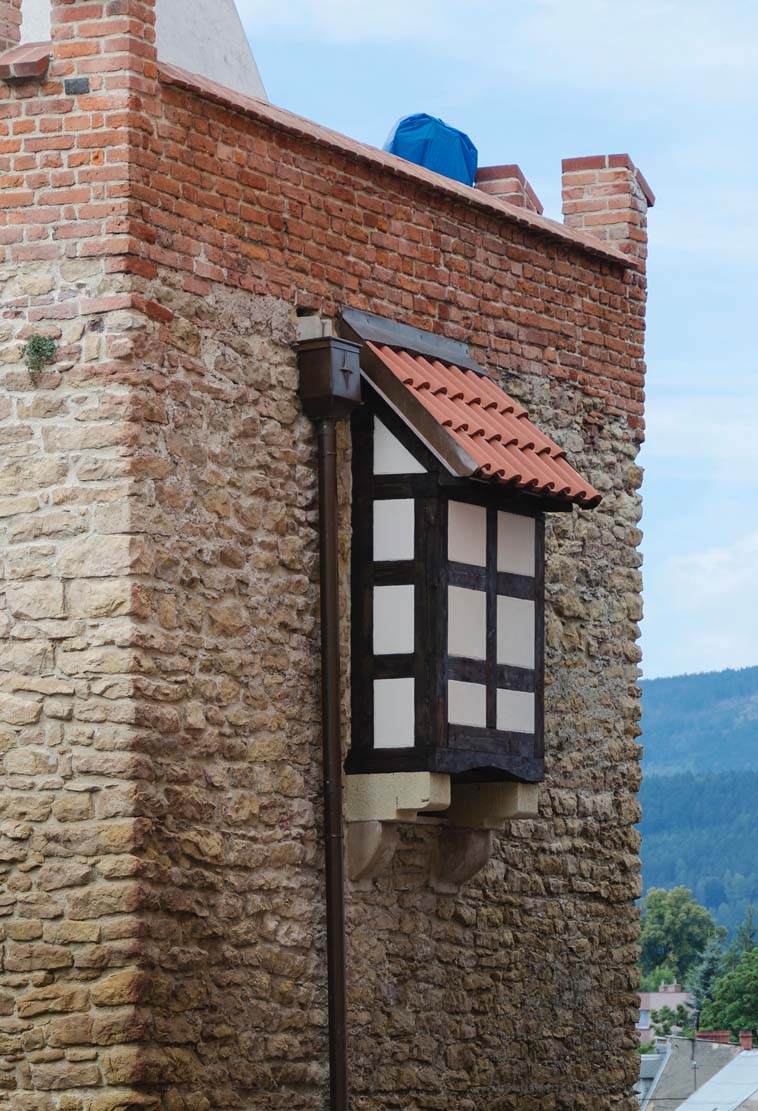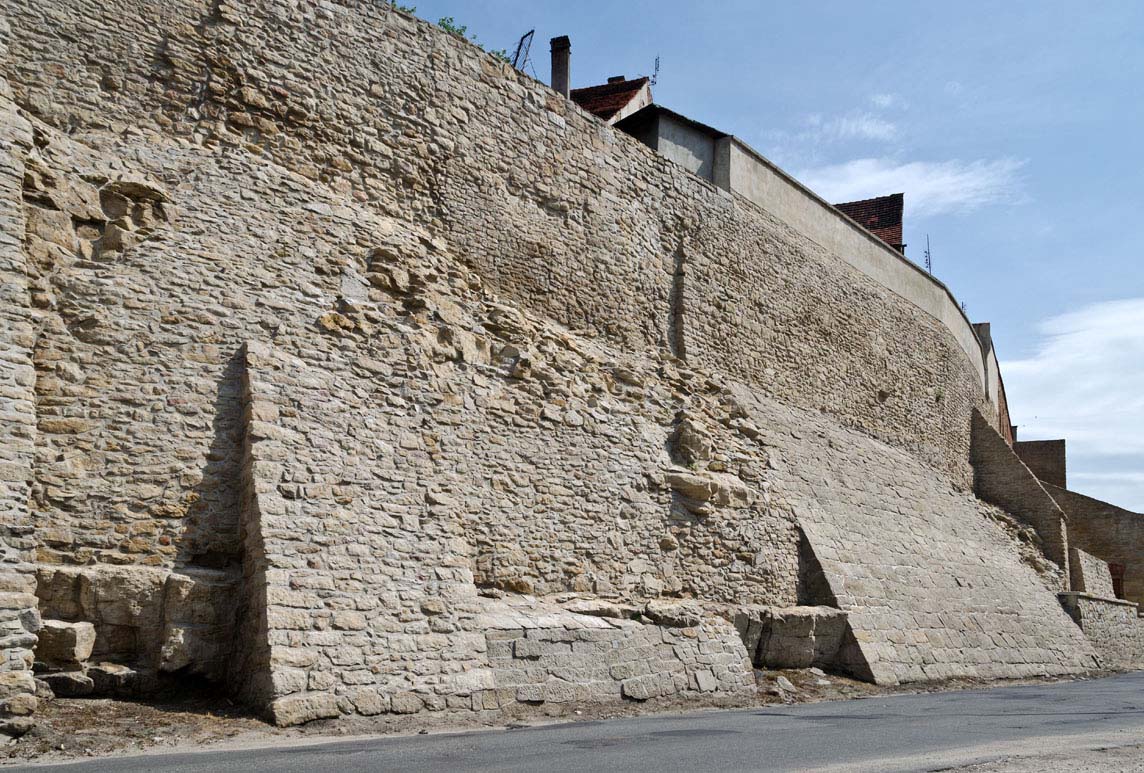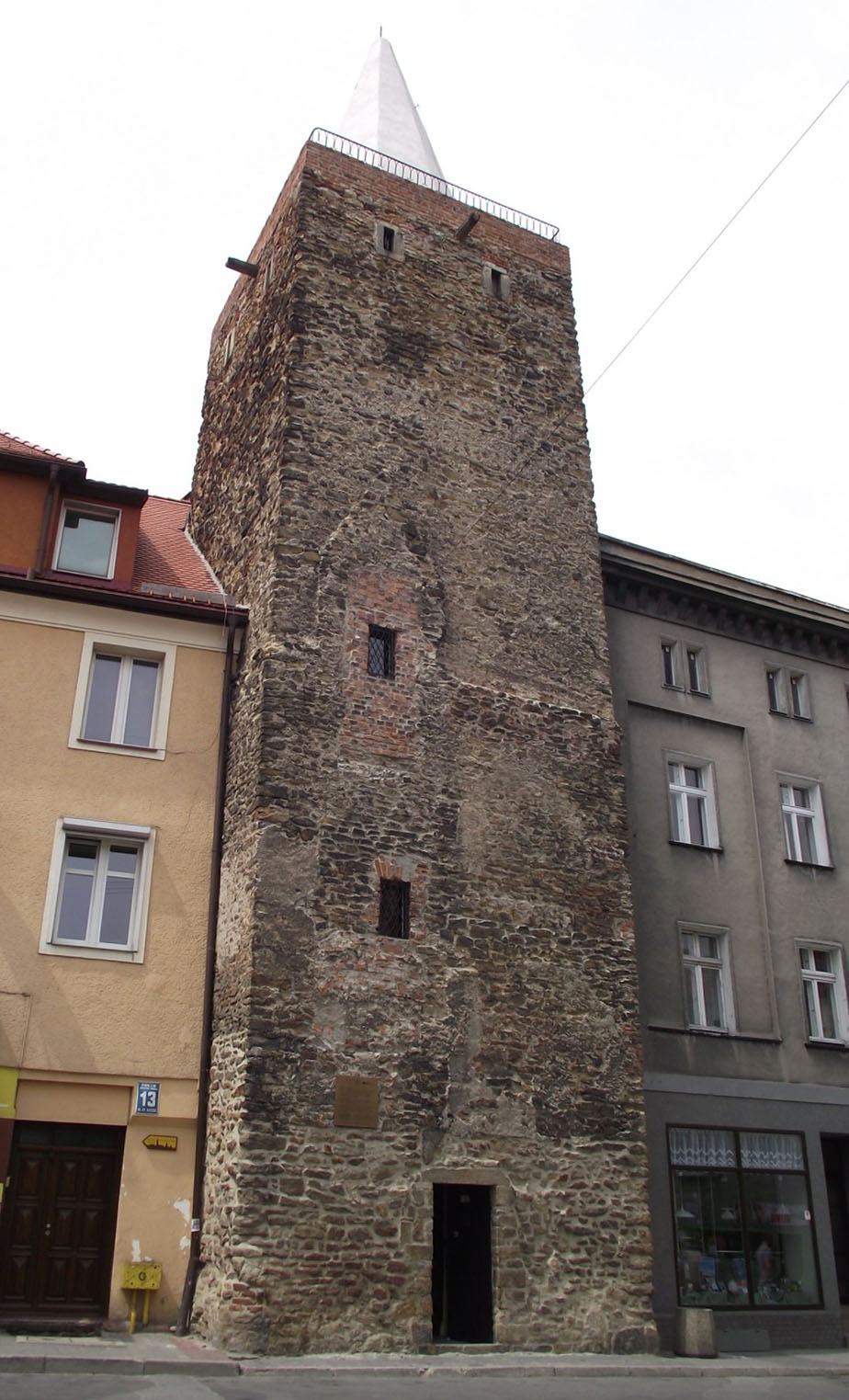History
The construction of the town defense walls in Bystrzyca Kłodzka was started before 1319 on the initiative of the vogt Jakub Rücker. For its erection, king John of Bohemia granted the town full legal independence, which put Bystrzyca in the group of royal towns. It was situated on an important trade route connecting Wrocław with Olomouc and Brno via Kłodzko.
At first, there were only two entry gates: Kłodzka and Water, in 1400 the Wyszków Gate was pierced, and around 1580, a New Gate was erected in its place. Probably in the first half of the 15th century, all the then existing towers and gate towers were raised and rebuilt.
In the 16th and 17th century, the fortifications were in poor condition, as evidenced by three recorded collapses of wall fragments. In 1745, as a result of heavy rainfall, water flooded the town, and under its pressure a fragment of the wall at tower house collapsed. Despite renovations, the fortifications continued to deteriorate since the mid-18th century. Even in 1778, with a lot of work, all suburbs were surrounded by palisades, and several bridges for cannons were erected on the walls. However, demolition began already in the 1840s: the New Gate was dismantled, followed by the Kłodzko Gate, with only the tower left. In 1870, a moat was filled in and the alleys were arranged at its site.
Architecture
The layout of the defensive circuit in Bystrzyca was dictated by the specific terrain in the form of a steep, high escarpment determining the town’s range from the south and east. Thanks to this, the town did not require additional protection from these sides by a moat, which was only dug from the west and north. On the west side, the curtain ran fairly straight up to the northwest corner narrowing in which the parish church was located. There, the defensive wall turned and ran north side eastwards to the mentioned escarpment.
Medieval city walls were built of unworked stones. Their thickness was about 1 meter, they had a crown in the form of a wall-walk for defenders and a breastwork with battlement. From the east and south side of the escarpment, they were reinforced on the outside with densely spaced buttresses, where the wall reached the highest height, over 10 meters from the base of the hill. Due to the favorable terrain, it was not necessary to erect many flanking towers, only two or three towers were built at sensitive points. Entry into the town was ensured by three gates: Kłodzko Gate in the north-east, Water Gate on the south, and since 1580 also the New Gate, built on the site of the previous Wyszecka wicket.
The Water Gate, also known as the Low or Mountain Gate, was erected on a quadrilateral plan with dimensions of about 5 x 6 meters, a wall thickness in the ground floor of 2 meters and a stone part height of about 12 meters. Inside, at the ground floor level, it received a pointed passage with a barrel vault. From the field side, on the face of the wall, a recess with a semicircular top was created, acting as a guide for the portcullis. In addition, the passage was closed with double-leaf doors, blocked with a double bar set in two pairs of holes in the wall. From the town side, the tower upper floor was accessible by a suspended porch, leading from the defensive wall-walk in the crown of the wall curtain (in the 18th century it was replaced by brick stairs). It led to the room above the passage, covered with a wooden ceiling, illuminated by small four-sided and slit windows from the north and south. The guards staying in it had access to the latrine, suspended in the bay at the west façade. Above, there was another room, accessible by a ladder, lit by a narrow loop hole pierced just above the recess of the portcullis. Probably there was a mechanism operating the portcullis, because at this height there were two small holes through which the chains carrying it were led. The upper part of the tower at the level of the highest floor was surrounded on three sides (excluding the north) by a wooden hoarding porch, mounted on solid wooden beams attached to openings in the walls. Above it, the whole gatehouse was crowned with a hip ridge roof. The battlements and the brick pyramidal top were added in 1568.
The Kłodzko Gate was a low gatehouse on a rectangular plan located in the line of the perimeter wall, flanked from the west by the nearby Kłodzko Tower. It received an ogival entry portal, preceded by a drawbridge over the dry moat, and was crowned with a breastwork almost 3 meters high and a gable roof.
The Kłodzko Tower was erected on a square plan with a side of 5 meters, the walls at the ground level were 1.6 meters thick and the original height in the first half of the fourteenth century was about 12.5 meters. So it was higher than the wall-walk crowning the gatehouse, but it was directly connected to it by a passage. On the lowest floor, it housed an unlit and narrow prison dungeon, measuring only 2.9 x 3 meters, probably accessible from the gatehouse. The upper storey was also the entrance level, the pointed portal of which was set at a height of 8.15 meters. It’s door could be block with a bar set in the opening in the wall. In the first half of the fifteenth century, the gate tower was raised to a height of about 19.5 meters and crowned with a battlement with merlons, 0.85 meters wide and 1 meter high. The whole had to be covered with a roof of an unknown form. The interior was divided by a wooden ceiling into two storeys: the lower one with the entrance to the gatehouse, set at a height of 8.15 meters, illuminated by a slit from the north, and the higher one, also lit by a similar slit. Moreover, the lowest prison dungeon still functioned. The original wooden roof in 1568 was replaced with a brick pyramid-shaped helmet. At that time, on all walls of the highest floor, two loop holes were placed in the places of earlier gaps between the merlons, and between them there were stone gargoyles, used to drain rainwater. Interestingly, at the very top, there was also a stove to heat the guards on colder days.
The Knight’s Tower, in the past also known as Crow, Black or Butcher’s Tower, was situated on the eastern side of the perimeter. Its base in the first half of the fourteenth century received dimensions of 5.2 by 3 meters. Originally it was about 8.5 meters high, it was open from the town side, topped with battlement and connected by passages from the east and west with the curtains of the defensive walls. In the first half of the fifteenth century, it was rebuilt into a closed tower, full, with dimensions in the plan of 5.2 x 5.3 meters. It was also significantly increased by about 10 meters. Its façade on the north side was pierced with at least three vertical slit openings, single openings from the south and east, and in the wall from the town side (south) at a height of 8.5 meters there was an ogival entrance portal, accessible through the wooden porch overhang on stone consoles at the level of 6.2 meters and stairs or ladder. The interior of the tower was divided into five storeys, separated by wooden ceilings placed on the offsets of the walls. The lowest one was probably an unlit prison dungeon, accessible only through an opening in the ceiling from above. Initially, the tower had a wooden roof, in the 16th century it was turned into a brick one in the form of a pyramid.
The unknown tower was located between the Water Gate and New Gate. Quadrilateral, topped with battlements, it had three floors pierced with numerous loop holes. However, the key to the city’s defense system was the residential and defensive tower, the seat of the vogt, situated on a steep rock near the Water Gate, separated from the town by a rampart and a ditch. It was 90 feet high (about 27 meters) and crowned with a battlement. On the north and south side there were two small turrets. The lower part of the tower housed two cut in rock, vaulted cellar chambers. Higher probably were living and representative rooms. In front of the tower there was to be a smaller building where stones were stored in case of a siege, also stables and a garden were to be located nearby.
Current state
Bystrzyca belongs to the towns which have preserved the defensive walls on almost the entire perimeter, although lower than the original one. Only the demolished fragment in the western part of the town did not survive, gaps are also on the north side. Currently, the best preserved fragments of fortifications are: the Water Gate, the Kłodzko Tower and the Knight’s Tower. The latter was converted into a church belfry in 1823, and therefore double ogival windows with a brick frame were pierced in it. On the wall from Okrzei Street can see the remains of a gable roof covering the Kłodzko Gate once. In addition, large fragments of walls have survived along the streets of Międzyleska and Wojska Polskiego, often used as structural elements of later houses. The remnant of the medieval tower house is the rebuilt house placed on a high escarpment at Podmiejska 1 Street.
bibliography:
Bartnik K., Bystrzyca Kłodzka, Wrocław 1992.
Legendziewicz A., The architecture of the town wall gates and towers in Bystrzyca Kłodzka between the fourteenth and twentieth centuries, “Czasopismo Techniczne”, vol. 11, Kraków 2019.
Pilch J, Leksykon zabytków architektury Dolnego Śląska, Warszawa 2005.
Przyłęcki M., Mury obronne miast Dolnego Śląska, Wrocław 1970.

